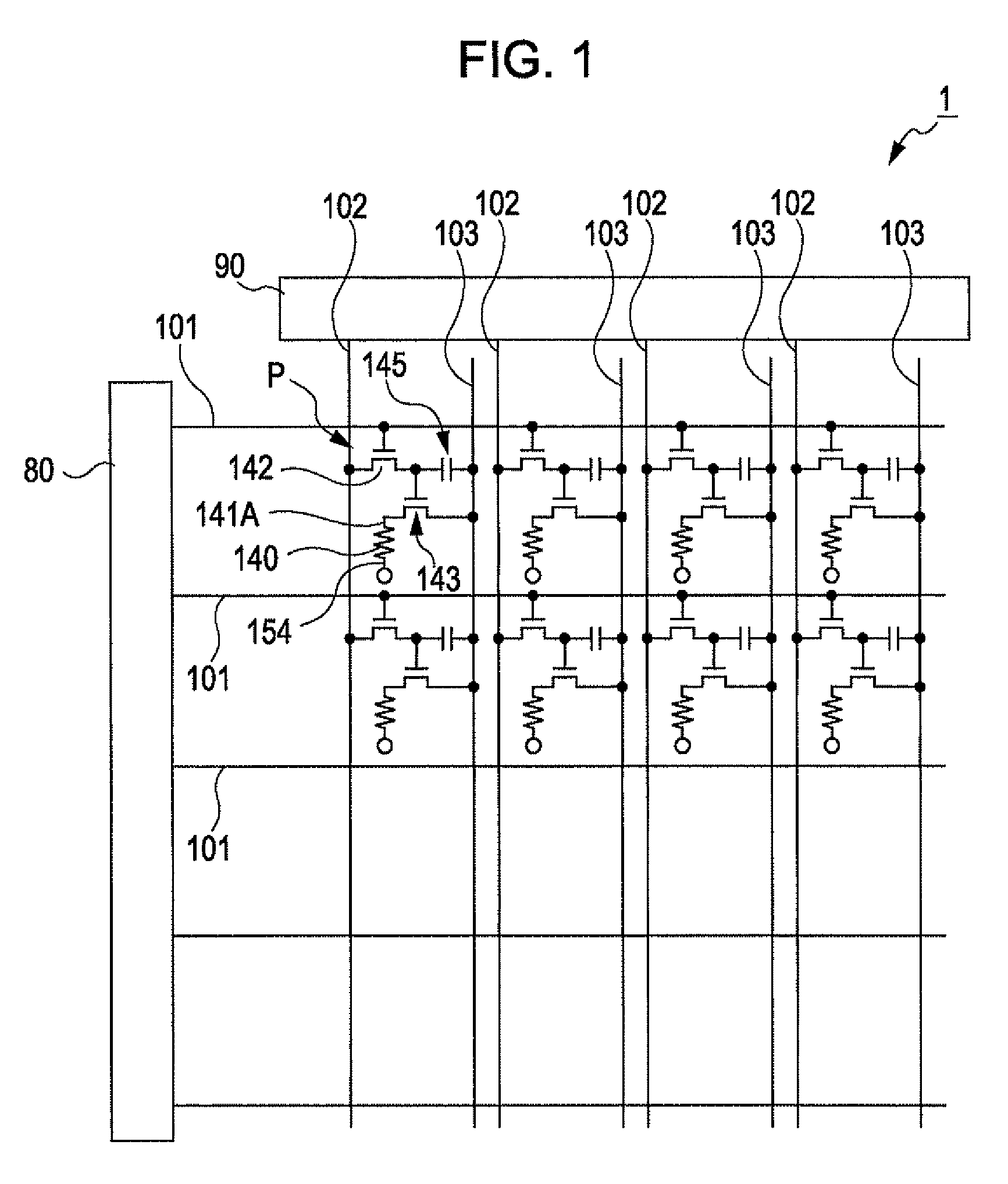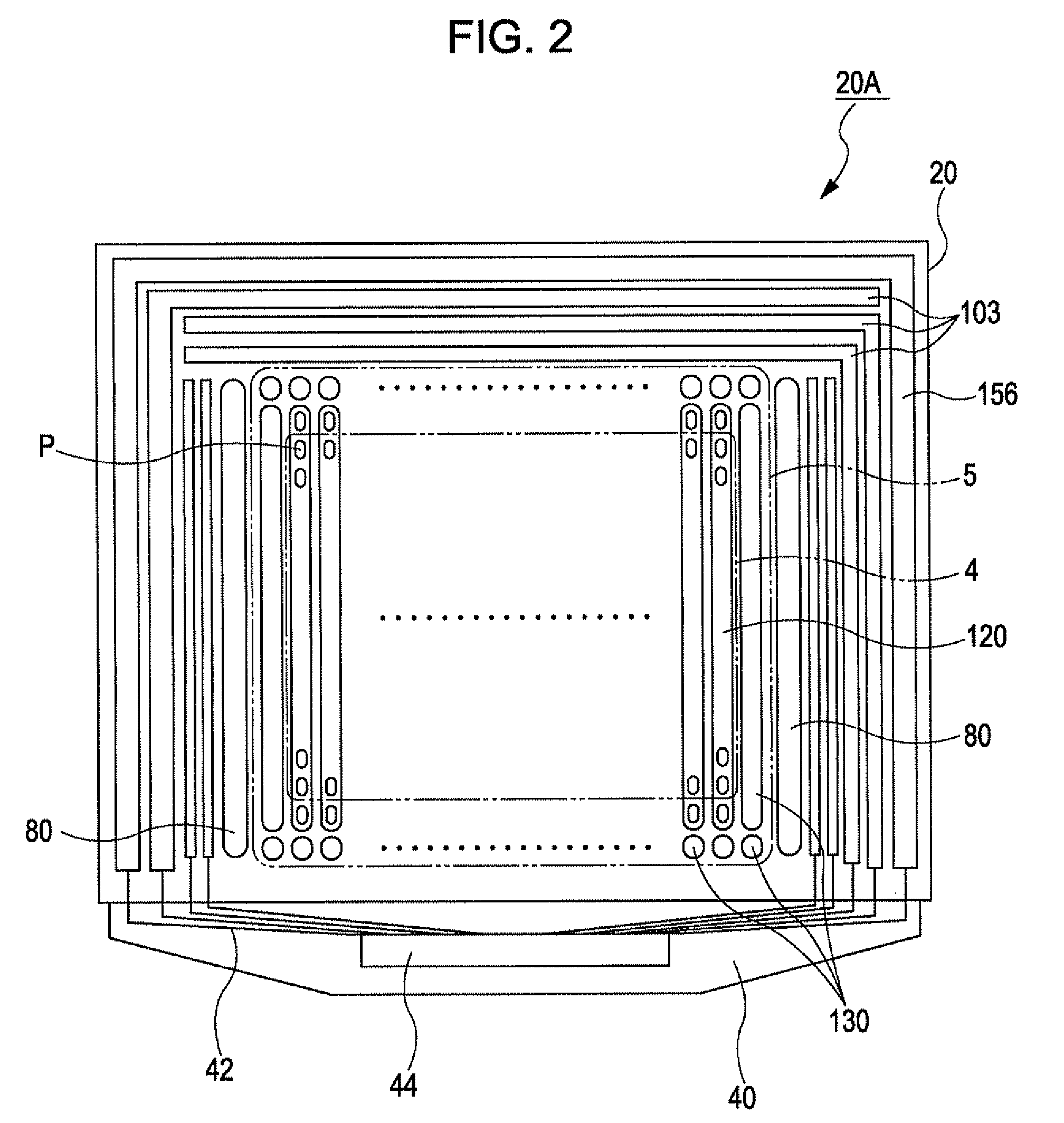Method for manufacturing organic electroluminescent device and organic electroluminescent device
a technology of electroluminescent devices and organic electroluminescent devices, which is applied in the manufacture of electrode systems, electric discharge tubes/lamps, and discharge tubes luminescent screens, etc., can solve the problems of difficult to reduce thickness variations, display failures, and new problems, and achieve high-quality images
- Summary
- Abstract
- Description
- Claims
- Application Information
AI Technical Summary
Benefits of technology
Problems solved by technology
Method used
Image
Examples
Embodiment Construction
[0057]A method for manufacturing an organic EL device 1 according to an embodiment of the invention will now be described with reference to FIGS. 1 to 9. For the sake of visibility, the dimensional proportions and the numbers of parts may differ as needed in each figure.
[0058]Organic EL devices are classified into two types. One is a top emission type from which light emitted from organic EL elements is extracted through the substrate opposite to the substrate on which the organic EL elements are formed. The other is a bottom emission type from which the light is extracted through the substrate on which the organic EL elements are formed. The invention can be applied to either type to produce a favorable effect, and the following description does not limit the type of organic EL device except for some factors including material.
[0059]FIG. 1 is a schematic diagram of the wiring structure of the organic EL device 1 according to the present embodiment. The organic EL device 1 is of an ...
PUM
 Login to View More
Login to View More Abstract
Description
Claims
Application Information
 Login to View More
Login to View More - R&D
- Intellectual Property
- Life Sciences
- Materials
- Tech Scout
- Unparalleled Data Quality
- Higher Quality Content
- 60% Fewer Hallucinations
Browse by: Latest US Patents, China's latest patents, Technical Efficacy Thesaurus, Application Domain, Technology Topic, Popular Technical Reports.
© 2025 PatSnap. All rights reserved.Legal|Privacy policy|Modern Slavery Act Transparency Statement|Sitemap|About US| Contact US: help@patsnap.com



